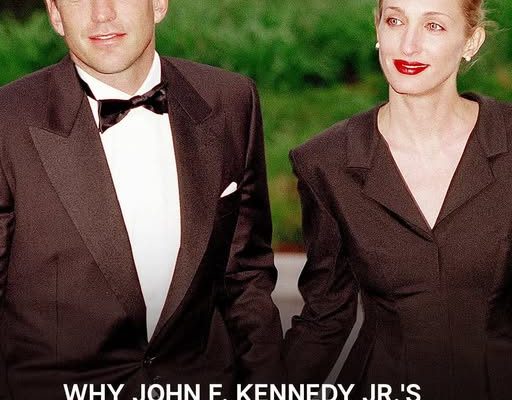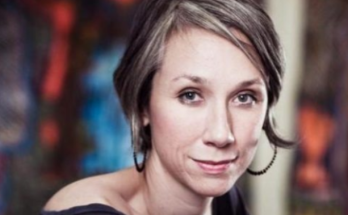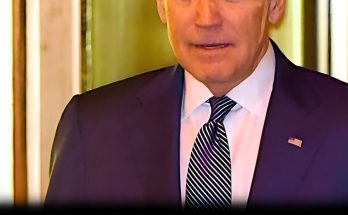John F. Kennedy Jr.’s 1999 plane crash shocked the world — but some experts insist it wasn’t just pilot error. From missing radio calls to alleged military interference, the incident still raises unsettling questions.
The crash that killed John F. Kennedy Jr., his wife, and her sister remains one of the most tragic and high-profile aviation disasters in modern American history. Officially, the National Transportation Safety Board ruled it an accident. But many have continued to question that conclusion.In the decades since the crash, experts, former investigators, and close associates have pointed to a string of red flags. This is a closer look at why many believe the crash wasn’t just an accident and the mounting personal pressures in John Jr.’s life leading up to his death.The Night That Changed Everything
On July 16, 1999, JFK Jr. started his last day like any other. He had lunch with his editors, hit the gym for a workout, and returned to his office to meet his sister-in-law, Lauren Bessette.Later that afternoon, they headed together to Essex County Airport in New Jersey, where he had arranged for his plane to be readied. Meanwhile, Carolyn was in Manhattan, shopping for a dress to wear to the family wedding they were scheduled to attend the next day.She then climbed into a Lincoln Town Car for the drive to the airport, arriving shortly after her husband and sister. Traffic had delayed everyone, and by the time they reached Essex, darkness had already begun to fall.The original plan was simple — drop Lauren off at Martha’s Vineyard and then continue to the Kennedy compound in Hyannis Port for his cousin Rory Kennedy’s wedding.Although reports from Martha’s Vineyard indicated visibility of eight miles and clear skies, they were inconsistent. Just minutes earlier, visibility had dropped to six miles, and conditions were described as humid and hazy. Still, JFK Jr. pressed on.Once in the air, the lights of the Jersey shoreline gradually faded behind them. The heat and humidity created a layer of haze that blurred the horizon. Then, as the haze thickened and the sea amplified the moisture in the air, the coast ahead vanished.Though the plane was only 15 minutes from Martha’s Vineyard, the lights of the island were invisible. Inside the cockpit, conflicting signals began to disorient John Jr. His mind and his instrument panel were no longer aligned.What he felt didn’t match what the dials told him. This type of disorientation had a name — black hole vertigo. In aviation terms, black hole vertigo refers to a sensory illusion where reason, instinct, and reality disconnect. A pilot may lose all sense of orientation — even the ability to know which way is up.In such conditions, instincts lie. Only experience teaches a pilot to ignore internal cues and trust the instruments. JFK Jr. did not yet have that level of experience.Byron Byrnes, an official from the Air Traffic Controllers Association, explained it simply. If the aircraft feels like it’s banking right, a pilot may instinctively correct left. But if the artificial horizon says otherwise, ignoring it can be fatal.At 9:34 p.m., JFK Jr. was flying at 5,800 feet. Over the next five minutes, the plane descended at a steady rate of 700 feet per minute, reaching 2,300 feet. Then, at 9:39, he suddenly veered right and climbed slightly to 2,600 feet. Thirty seconds later, he lurched left.Suddenly, in a nosedive at 4,700 feet per minute, the aircraft entered what pilots call a graveyard spiral. The spiral grows tighter and more severe, ending in a deadly collision.
If JFK Jr. saw anything in those final seconds, it would have been the ocean surface spinning toward him at 79 feet per second. The crash killed all three passengers instantly. Each was still strapped into their seat.Five days passed before search crews found anything definitive. The discovery came in the early morning hours when sonar picked up a red blotch on the ocean floor. At 2:30 a.m., an underwater camera confirmed it — the wreckage of JFK Jr.’s plane.
Several hours later, Navy divers reached the site and found the bodies of JFK Jr., Carolyn, and Lauren, trapped in the broken fuselage beneath 116 feet of water, about seven miles southwest of Martha’s Vineyard.A Death That Raised More Questions Than Answers
Though officially ruled a tragic accident due to pilot error, John Jr.’s fatal plane crash on July 16, 1999, continued to stir doubt, as for some, a trail of questions pointed to a darker truth.
Episode ten of the podcast “Fatal Voyage: The Death of JFK Jr.” explored the “screaming signs” that the crash may have been more than just pilot error.
Theories ranged from mechanical failure to foul play — and some experts argued that the facts simply didn’t add up. Author John Koerner said:While some speculated that JFK Jr. may have taken his own life — citing stress over his struggling magazine and rumored marriage problems — veteran homicide detective Colin McLaren dismissed that theory as unlikely.”Another issue is that the FAA says he did not contact any of the flight control people on his path,” the filmmaker said. “And all of his flight instructors, the ones that I was able to talk to, they couldn’t believe it.”The instructors were adamant — JFK Jr. was known for checking in regularly with air traffic control. For him to fly without making contact was, in the filmmaker’s words, “absolutely outrageous, in the most extreme terms.” The idea that he would ignore standard flight procedure was, to them, “just beyond belief.”What raised further suspicion was the Pentagon’s unusual involvement. According to the filmmaker, the military stepped in to manage the crash reporting later that same afternoon. He revealed:
“Why is the Pentagon taking over the reporting of John’s plane crash? Well, that’s another screaming sign. They’re the military taking over the reporting, and in their taking over the reporting, they announced that there was no flight instructor on the plane. Well, they had no way of knowing.”Adding to the doubt, the filmmaker referenced a public report he found, which analyzed the weather conditions that evening.
“There was no rain, there was no fog, it was fine,” he said. “And in fact, people on the ground confirm this…so we can rule out any bad weather.” If true, it challenged the idea that disorientation from the weather was to blame.Author John Koerner claimed he had found witnesses who reported seeing an explosion in the sky around the time and place the plane would have been airborne.
As the public admired John Jr. for his charm, poise, and legacy, few knew how much turmoil had taken hold in his personal life by the summer of 1999.He also shared that JFK Jr. was “obsessed” with uncovering who had killed his father, former president John F. Kennedy — and that this may have made him a threat to powerful interests.
Reporter Leon Wagner echoed that claim. “With his own money, he was going to reopen the investigation, and then that’s when he died and that was obviously the end of it,” Leon said.Whether it was a conspiracy or coincidence, some remain convinced that the crash was no accident at all. The questions raised — about air traffic communication, military involvement, and JFK Jr.’s own intentions — continue to cast a long shadow over the official narrative.A Life Unraveling Behind the Scenes
As the public admired John Jr. for his charm, poise, and legacy, few knew how much turmoil had taken hold in his personal life by the summer of 1999.Episode three of the “Fatal Voyage: John F. Kennedy Jr. Case Solved” podcast took a closer look at who JFK Jr. was becoming in his final years, and how the tension in his private world may have shaped his fateful decisions.For one, from childhood, JFK Jr. had shouldered the expectations placed on him by his mother, Jackie Kennedy. According to reporter Leon Wagner, when Jackie died in 1994, JFK Jr. told friends he had been reborn. Her death, while deeply personal, also marked a turning point — one that seemed to signal a new chapter in his life.But that chapter quickly became complicated. His marriage to Carolyn Bessette, though often described as warm and affectionate, was not without strain. Beneath the polished exterior, the couple was reportedly experiencing a heart-wrenching crisis.Part of the emotional weight came from outside their relationship. In early 1994, JFK Jr.’s cousin and closest confidant, Anthony Radziwill, was diagnosed with a rare form of sarcoma.Their bond ran deep and watching Anthony’s health decline added an emotional burden to John Jr.’s already complicated life. His professional world wasn’t faring much better.In 1995, JFK Jr. launched George magazine with his friend Michael Berman. The glossy publication, introduced with a bold Herb Ritts cover of Cindy Crawford dressed as George Washington, made a splash.It aimed to blend politics and pop culture — bringing substance to readers who might otherwise avoid political coverage. But while the concept was ahead of its time, George struggled to stay afloat.The magazine had missed its goal of turning a profit within three years. By 1999, ad sales were down, and hard decisions about its future loomed. Carolyn, too, was navigating her own crossroads.After marrying John, she stepped away from her job at Calvin Klein. The relentless media attention that followed her made it nearly impossible to imagine returning to a traditional career. She was caught in a public life she hadn’t asked for — and couldn’t escape. JFK Jr.’s close friend Sasha Chermayeff said:”Three years into the marriage things were really problematic. I know that they really did love each other. It was not a lack of love.”Despite the chaos swirling around them — both personal and professional — JFK Jr. and Carolyn still made plans to attend Rory’s wedding in Martha’s Vineyard, a decision that would have a fatal outcome.
From his state of mind to the unusual handling of the crash investigation, the evidence surrounding John Jr., his wife, and her sister’s deaths suggests a deeper story.
Whether it was a tragic miscalculation or something more deliberate, one thing is certain: not everyone believes it was an accident.



